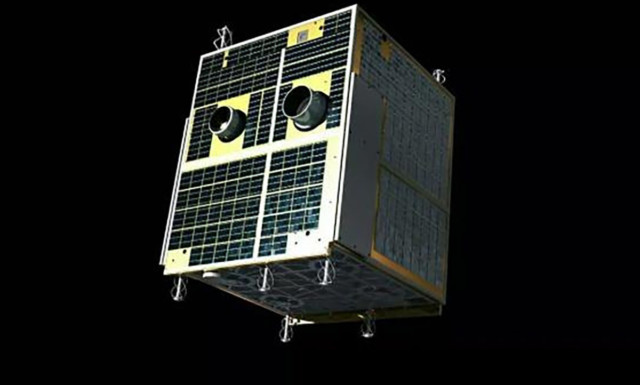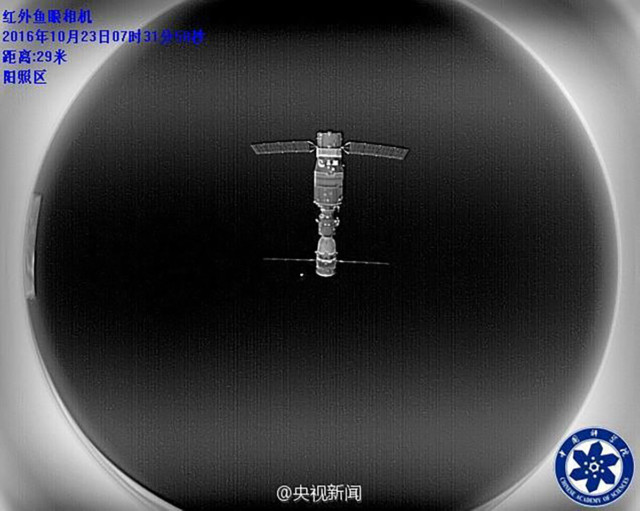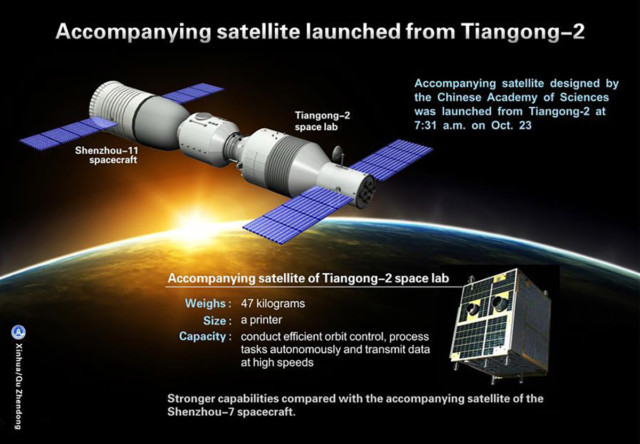On Sunday morning, China’s Tiangong-2 spacelab launched Banxing-2, a miniature companion satellite for capturing high-resolution images and video of the orbiting spacelab.
The companion satellite will orbit at a distance of about 500 km from Tiangong-2 and Shenzhou-11. Its purpose is to visually document the vessels from various angles and distances and will use a 25-megapixel camera equipped with a fisheye lens. The Banxing-2 is also equipped with infrared thermal imaging sensors, which will be used to monitor the condition and maintenance of the lab, according to Chen Hongyu, an engineer with CAS.
The micro-satellite has been given the nickname in China as a space ‘selfie stick’.
The imaging satellite is only 40 kilograms and is the size of an average desktop printer. Despite its small size, the Banxing-2 is capable efficient orbit control, transmitting data at high speeds, and has stronger computer processing than its previous model that accompanied the Shenzhou-7 spacecraft. Its functions are powered by three solar panels.
After the launch at 7:31 a.m. Sunday, Shenzhou-11 astronauts Jing Haipeng and Chen Dong captured video of the satellite with a hand-held camera as it flew beneath them.
Towards the end of October, the imaging satellite is scheduled to move closer to Tiangong-2 and Shenzhou-11, and will take more detailed photographs with its high-resolution camera.
Story written with information from Xinhua, CAS, and CCTV.
 CGTN America
CGTN America


